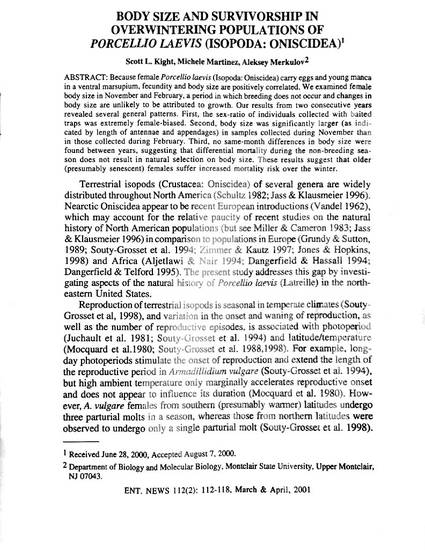
Article
Body size and survivorship in overwintering populations of Porcellio laevis (Isopoda: Oniscidea)
Entomological News
(2001)
Abstract
Because female Porcellio laevis (Isopoda: Oniscidea) carry eggs and young manca in a ventral marsupium, fecundity and body size are positively correlated. We examined female body size in November and February, a period in which breeding does not occur and changes in body size are unlikely to be attributed to growth. Our results from two consecutive years revealed several general patterns. First, the sex-ratio of individuals collected with baited traps was extremely female biased. Second, body size was significantly larger (as indicated by length of antennae and appendages) in samples collected during November than in those collected during February. Third, no same-month differences in body size were found between years, suggesting that differential mortality during the non-breeding season does not result in natural selection on body size. These results suggest that older (presumably senescent) females suffer increased mortality risk over the winter.
Keywords
- porcellio laevis,
- isopoda,
- crustacea,
- terrestrial isopod,
- oniscidea
Disciplines
Publication Date
2001
Citation Information
Scott Kight. "Body size and survivorship in overwintering populations of Porcellio laevis (Isopoda: Oniscidea)" Entomological News Vol. 112 (2001) p. 112 - 118 Available at: http://works.bepress.com/scott-kight/16/
